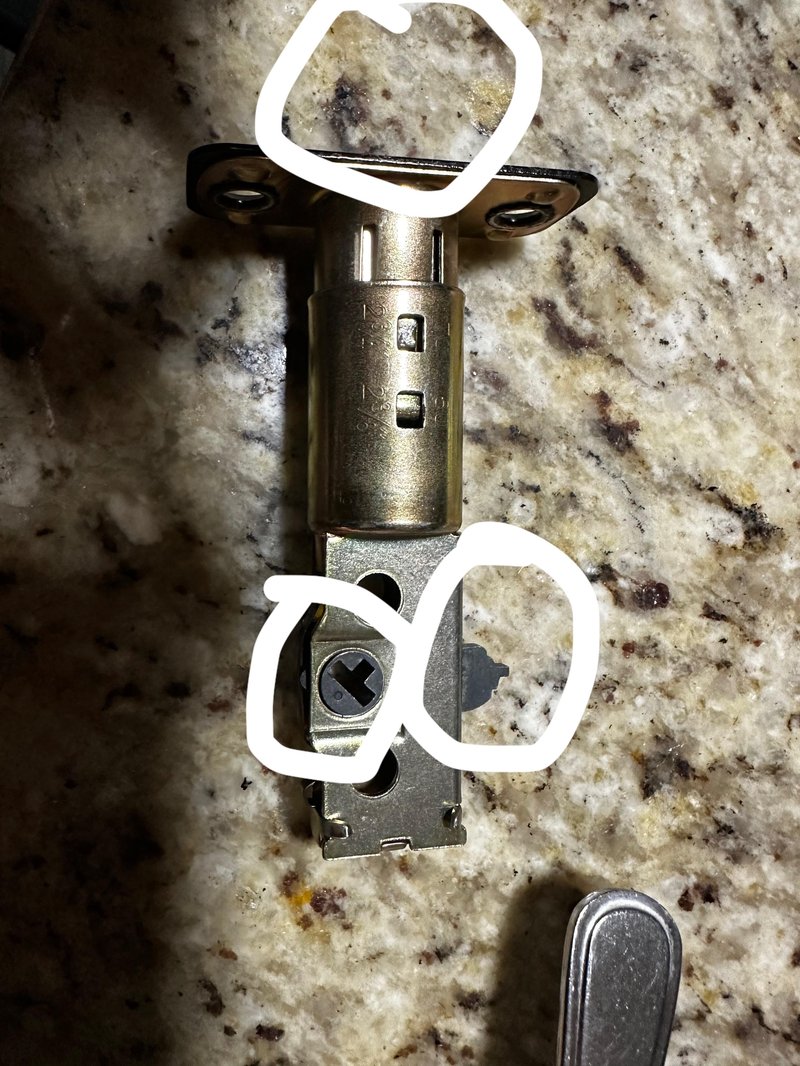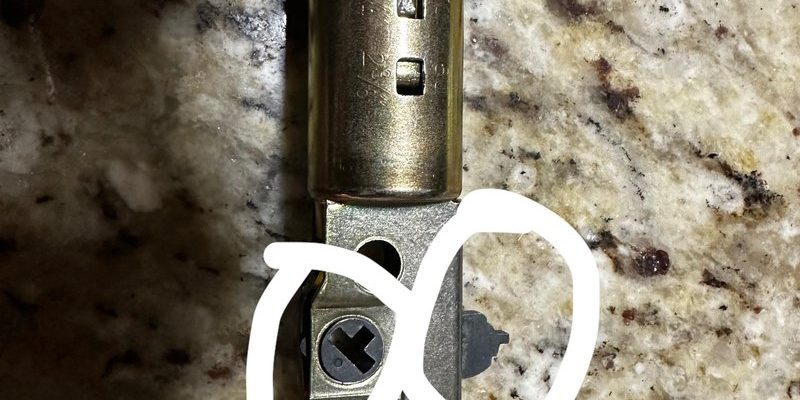
Here’s the thing: deadbolts are simple but tough. Most brands, from Schlage to Kwikset and Yale, use similar mechanisms, but little quirks can show up after years of everyday use. Maybe you’ve just moved in and the key won’t budge. Perhaps your smart lock’s code works—but the bolt still won’t slide home. No matter what kind of deadbolt you’re dealing with—classic, electronic, or even a keypad model—if it’s not extending fully, there’s usually a fix. Let me walk you through the most common causes, and how you can troubleshoot a stubborn lock without calling in the pros.
How a Deadbolt Works: The Basics
Most deadbolts, whether they’re old-school or part of a modern smart lock system, work on the same main idea. When you turn the key (or enter a code on electronic models), a sturdy metal bolt slides into the strike plate in your doorjamb, physically blocking the door from opening. Simple in theory, right? But here’s where it gets interesting: even a small misalignment or jam can stop the bolt from moving all the way, leaving you with a half-locked door.
The mechanics are straightforward. A cylinder turns a cam or tailpiece, which moves the bolt in or out. If any part of this system sticks—because of dirt, old grease, or a worn spring—the deadbolt might extend just partway. In electronic deadbolts like those made by Schlage or Kwikset, a battery powers a tiny motor that moves the bolt. If your batteries are running low, or there’s something jamming the mechanism, you’ll get that same telltale halfway lock.
Mechanical or electronic, the basic principle stays the same: any snag in the process can stop the bolt before it’s fully extended. Understanding how it all fits together makes it easier to spot the weak link when things go wrong.
Common Causes of a Deadbolt Not Extending Fully
Now, let’s talk about what usually goes wrong. There are a handful of usual suspects when your deadbolt won’t extend all the way. Spotting the right culprit is half the battle—here’s how they usually show up.
1. Misaligned Strike Plate: The strike plate is the metal piece attached to your door frame. If your door has shifted even slightly (which happens thanks to weather, age, or slamming), the bolt may not line up perfectly. You might notice scratch marks or dents around the opening—a clear sign things aren’t lining up.
2. Dirty or Jammed Bolt Mechanism: Dust, grit, and old lubricant can build up inside the lock over time. Imagine trying to slide a sticky drawer in and out. Sometimes, just a shot of lock-friendly lubricant can free things up. But if there’s a physical jam, you’ll feel resistance or hear grinding.
3. Battery or Motor Issues (for Smart Locks): If you’re using an electronic deadbolt, faded batteries often mean the bolt doesn’t have enough power to fully extend. Some brands even beep or flash to warn you, but sometimes it’s just half-movement and frustration. And if a reset or code sync doesn’t help, a weak motor could be the issue.
4. Key, Cam, or Internal Parts Worn Out: Older locks, or those exposed to rough weather, can have worn-down cams (the part that turns the bolt) or keys. If you have to jiggle or force the key, chances are something inside is close to giving out—leaving your lock stuck in limbo.
How to Troubleshoot a Sticking or Partial Deadbolt
Here’s what I’d do if my own deadbolt was stalling. Start with the basic stuff and work your way in—sometimes the simplest fixes get overlooked!
- Check for Obvious Blockages: Open the door and try turning the deadbolt with the door ajar. If it moves freely now, but jams when the door’s closed, your issue is likely alignment—not the bolt itself.
- Inspect the Strike Plate: Look for metal shavings, scratches, or signs that the bolt’s not lining up. If you see fresh marks, your door may have shifted, and the bolt is catching on the edge instead of going straight in.
- Lubricate the Mechanism: Use a graphite or silicone-based spray—never oil or WD-40, as these can go gummy over time. Insert the key, turn it a few times, and see if things smooth out.
- Test the Key or Code: For smart locks, try changing the batteries and re-pairing or resetting the remote. For key-operated models, see if another copy of the key works better. A worn-down key can cause partial movement.
If you’ve tried all this and the deadbolt still won’t extend fully, the problem might be deeper inside. Don’t force it—applying extra pressure could break the lock or snap your key.
How to Spot Misalignment Between Deadbolt and Strike Plate
Misalignment is one of those sneaky problems that can start small and get worse over time. Picture this: you close your door and try to lock it, but the bolt slams into the edge of the strike plate, leaving a small gap. Maybe the door frame has shifted with the season, or a little paint buildup is narrowing the hole.
Here’s how you can check for misalignment, step by step:
- Open your door and throw the bolt: With the door open, turn the key or thumbturn to push the deadbolt out. It should slide smoothly.
- Look at the bolt and strike hole: Close the door and watch if the bolt’s path lines up exactly with the strike plate hole. If it scrapes or can’t enter all the way, that’s misalignment.
- Examine for visible signs: Are there shiny spots, scratches, or wood chips around the strike plate? These are clues the bolt is hitting off-center.
- Try raising or lowering the door: Gently push or lift on the door as you turn the lock. If you feel the bolt suddenly slide in easier, your door isn’t sitting squarely in the frame.
If your deadbolt lines up when the door’s open but gets stuck when it’s closed, misalignment is almost always to blame.
Pro tip: Even a tiny shift—just a few millimeters—can keep your deadbolt from extending fully. Weather changes, humidity, or a slightly bent hinge can all throw things off.
Fixes for a Deadbolt That Won’t Extend All the Way
You’ve found the problem—now what? Luckily, most deadbolt issues have straightforward repairs that don’t require a locksmith. Here’s what you can try, from easiest to more involved.
- Adjust the Strike Plate: Unscrew the plate and move it slightly up, down, or sideways to match where the bolt lands. Sometimes, just widening the hole with a metal file can fix things.
- Check Door Hinges: Tighten any loose hinge screws. If the whole door droops, you may need to shim the hinges with thin cardboard or replace them altogether.
- Clean and Lube the Bolt: With the lock disassembled, knock out any dirt and old grease. A fresh coat of graphite or silicone spray will let everything move more freely.
- Replace Dead Batteries: If you’re using a keypad or smart deadbolt, swap in new batteries. That little boost of power can fix sluggish or half-throwing bolts.
- Reset or Re-Pair the Remote: For some electronic locks, a code or pairing issue can cause problems. Follow your brand’s instructions to reset or sync everything—especially after a battery change.
If none of these quick fixes solve your deadbolt issue, the lock itself could just be worn out. Internal cams or springs do fail, especially on older locks. In that case, replacing the whole lockset is usually easier (and safer) than trying to repair tiny internal parts.
Smart Deadbolts: Why Code, Battery, or Sync Issues Cause Trouble
Electronic deadbolts add convenience, but they bring their own flavor of problems. Instead of just turning a key, these locks rely on a battery-powered motor, a code or remote, and sometimes your phone to move the bolt.
Let me explain why these extra features can cause a deadbolt not to extend fully:
- Low Battery: The most common cause—especially if the bolt starts moving but gets stuck mid-way. Most brands (like Schlage or Kwikset) will flash or beep, but not always.
- Code or Sync Errors: If you’ve recently reset, paired, or reprogrammed your lock, it might lose track of the bolt’s position. Sometimes running a full lock/unlock cycle or doing a factory reset will set things right.
- Physical Jam: Just like with mechanical deadbolts, dirt or misalignment will trip up the motor—only now, you might hear weak whirring or clicking sounds instead of feeling resistance by hand.
Bottom line? With smart locks, always check batteries first, and don’t overlook the basics (like alignment). If your code works but the deadbolt only moves halfway, it’s probably a sync or power issue—not a complicated mechanical failure.
When to Replace vs. Repair Your Deadbolt
You might be wondering—how do you know when to give up on a stubborn deadbolt and just buy a new one? Honestly, most minor problems are worth fixing yourself. But if you’ve tried all the troubleshooting steps and the deadbolt still won’t extend fully, it’s probably time for a replacement.
Here are some signs it’s best to swap out the lock:
- The inside parts feel loose, gritty, or won’t stay lubricated, even after cleaning.
- The key is hard to turn, or you have to jiggle it every time (and it’s not just a worn key).
- For smart deadbolts, the battery drains quickly or the motor struggles, even with new batteries and a reset.
- There’s visible rust, cracks, or other signs of serious wear and tear.
Brands like Schlage, Kwikset, Yale, and August all make replacement deadbolts for almost every door. When in doubt, it’s better to replace the lock than risk your home’s security on a fix that only half-works.
Tips for Preventing Future Deadbolt Problems
Keeping your deadbolt working smoothly doesn’t take much effort if you catch issues early. Here’s how to keep things secure without constant repairs:
- Check Alignment Every Season: Doors and frames swell and shrink with the weather. Test your bolt’s movement every few months and adjust the strike plate as needed.
- Clean and Lubricate Annually: Just a quick squirt of graphite or silicone spray in the keyhole and bolt mechanism keeps things moving freely.
- Avoid Slamming Doors: Over time, hard slams bend hinges and throw off alignment. Gentle closing saves your lock and your doorframe.
- Change Batteries on Schedule: If your lock takes batteries, don’t wait until they’re dead. Make a habit of swapping them out once or twice a year—or after a big cold snap, when batteries drain faster.
And don’t forget to keep a spare key or backup code handy, just in case. Nobody wants to get locked out at midnight because of a stubborn bolt.
A deadbolt that won’t extend fully might seem small, but it leaves your door vulnerable. The good news? Most problems—misalignment, dirt, worn keys, dead batteries—are easy to spot and fix with a little patience. Whether you’re working with a Schlage, Kwikset, Yale, or just a no-name hardware store lock, the same steps apply: check alignment, clean and lubricate, replace batteries, and reset codes if needed. If the bolt still won’t behave, replacing the lock is the best way to keep things safe.
Regular checkups are worth it. After all, your deadbolt is your home’s first line of defense. Give it a little attention, and you’ll keep things locked up tight—no stress, no surprises, and no half-open doors.
